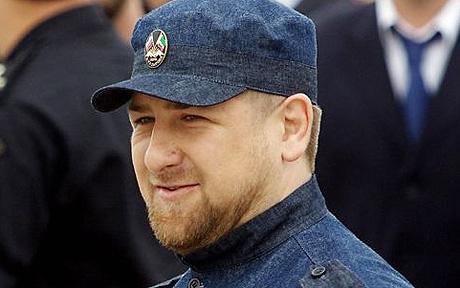
Fighting Along Chechen-Dagestani Administrative Border Heaviest in Recent Years
Publication: Eurasia Daily Monitor Volume: 9 Issue: 38
By:

The start of the large-scale special operation by the police, military and Federal Security Service (FSB) forces launched in Chechnya’s Nozhai-Yurt district on February 13 sent the Russian news agencies into disarray. They reported there were three groups of militants headed by 26-year-old Arslan Mamedov of Dagestan (aka Emir Muaz), 28-year-old Ruslan Temirkaev of Dagestan (the Russian security services failed to specify his nom de guerre) and 47-year-old Makharbi Timiraliev of Chechnya (aka Emir Abudar) (www.rosbalt.ru/federal/2012/02/17/947097.html). Emir Muaz was reportedly in Dagestan’s Kazbek district while Emir Abudar was in Chechnya’s Nozhai-Yurt. Both districts are on the administrative border between Chechnya and Dagestan. The fact that military jets and artillery were used in this operation signaled the extraordinary character of the clashes (www.bbc.co.uk/russian/russia/2012/02/120217_chechnya_dagestan_border_fight.shtml).
Speaking to Chechen television, Chechen leader Ramzan Kadyrov called the emir in Nozhai-Yurt one of the strongest and most influential leaders of the Chechen resistance movement. The “exact” number of the rebels under Makharbi Timiraliev’s command was also readily provided. According to Ramzan Kadyrov, there were 27 rebels under his command in 2006, but since then 20 members of the group were killed and the remaining seven were killed during the four day fight along the Chechen-Dagestani border (Grozny TV channel, February 17).
Thus, according to the Russian security services, Nozhai-Yurt has been effectively cleared of rebels. Whether it is true or not will be clear in the future. It is open to question why such a high-ranking rebel leader was not mentioned even once in the Russian mass media since 2000. First, Timiraliev was called Emir Masud, after two days he was “renamed” Emir Abudar. It is easy to guess that the Russian security services did not even know who they were fighting in this special operation. Forty-seven-year-old Makharbi Timiraliev – better known as Emir Makharbi, rather than Abudar – comes from Chechnya’s Nozhai-Yurt district. He was one of the subordinates of Chechen commander Khusein Gakaev, prior to which he was a subordinate of Emir Aslanbek Vadalov. Being a local forester, Timiraliev was responsible for trafficking people across the administrative border between Chechnya and Dagestan, which allowed him to maintain steady contacts between the rebel leadership in Dagestan and the Chechen armed resistance leaders.
Because the rebels freely crossed the administrative border between Chechnya and Dagestan during the latest special operation, it was hard to know whether there was one militant group or several groups in several settlements. If we examine just the losses on the Chechen government side, three people were killed and six wounded on the first day alone. At the conclusion of the special operation in Nozhai-Yurt on February 17, four more servicemen were killed and seven were injured. Thus, seven Russian servicemen were killed and 13 injured, while the Chechen police reported that five militants were killed. The rebel website Kavkaz Center also reported that five militants had been killed in the fighting, while the authorities stated they were still looking for yet another corpse of a slain rebel (https://kavkazcenter.com/russ/content/2012/02/18/88942.shtml).
The body of the supposedly slain Makharbi Timiraliev was not shown, which indicates the government authorities do not know much about him (https://ria.ru/defense_safety/20120218/568783095.html). It was hard to imagine that in the run up to the presidential elections in Russia the number of slain servicemen would exceed the number of slain rebels. Therefore, it is most likely more will be “killed” and more corpses will be found in the forests. Something similar took place in January during clashes in Chechnya’s Vedeno district. The Memorial human rights organization reported back then that three of the five young rebels reportedly killed during that fighting had gone missing following their arrest by the security services (https://hrcmemorial.livejournal.com/?skip=10).
As a result of the five-day special operation along the border between Chechnya’s Nozhai-Yurt district and Dagestan’s Kazbek district, the two heads of the republics made contradictory statements. Kadyrov extended his gratitude to his Dagestani colleagues for assistance in carrying out the operation, while the secretary of Dagestan’s Security Council, Magomed Baachilov, frantically denied such cooperation with the Chechen authorities (www.riadagestan.ru/news/2012/2/17/132564/). This is not surprising, given that any operations by Chechen authorities on Dagestani soil would be perceived by Dagestanis as an insult. A similar reaction by Ingushetia’s residents forced that republic’s president, Yunus-Bek Yevkurov, to abandon the practice of joint operations with the Chechen authorities. Therefore, it is understandable why official Makhachkala decided to send a signal to Ramzan Kadyrov to forget about his plans for joint operations.
According to Russia’s Life News, Chechen government forces have not suffered such casualties in recent years. The website, relying on its own sources, contradicted the official casualty numbers, reporting that 21 were killed and 38 injured (https://lifenews.ru/news/82887). A source in the Chechen Interior Ministry reported that 17 people were killed and 24 injured in the special operation, which lasted for 4 days. These figures covered only Chechen Interior Ministry personnel. It is still unclear how many casualties the Dagestani side suffered. Casualties among Defense Ministry and FSB personnel in special operations are normally concealed to make these operations look like purely police operations. Thus, the latest armed clash in Chechnya’s Nozhai-Yurt district appears to have been one of the largest since the rebel assault on Ramzan Kadyrov’s ancestral village of Tsentoroi in August 2010.




